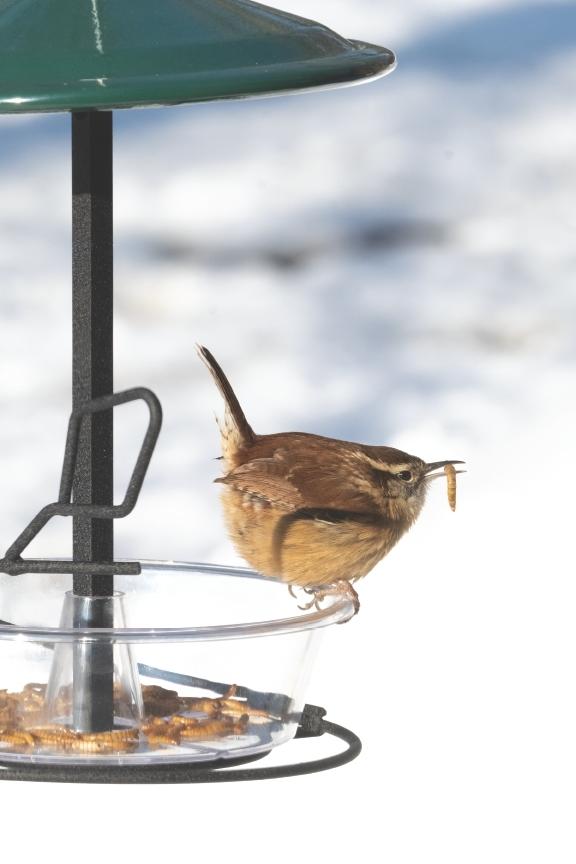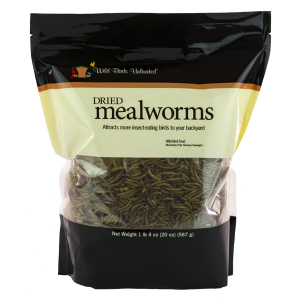
Mealworms: The Best Food for Attracting Insect-Eating Birds
Did you know almost 80% of the world's bird families eat insects, at least some of the time? That makes providing mealworms a natural thing to do for your birds. And birds love 'em! A Red-breasted Nuthatch was seen taking mealworms from a feeder and caching them at a rate of three per minute!
What Are Mealworms?
Mealworms are the larvae of the beetle Tenebrio molitor. They're chock full of fat, protein, and minerals birds need.
Which RGV Birds Go for Mealworms?
Lots of birds that reside or migrate through the Rio Grande Valley will appreciate the mealworms you put out, especially during nesting season. They'll be special favorites of birds like wrens, thrashers, mockingbirds, woodpeckers, robins, catbirds, and towhees. Watching birds flying between your feeder and their nests as they take mealworms to their chicks is a real treat!
You can also use your mealworms for certain family pets, like gerbils, turtles, lizards, and chameleons. Some customers also buy them for their chickens.
Dead or Alive?
We stock mealworms both ways!
- ALIVE: We sell mealworms in a live, but dormant, state. These are the most attractive to and nutritious for birds.
- DEAD: If live mealworms creep you out, try our bags of dried mealworms. Dried mealworms are also included in some of our suet blends.
How to Store Live, Dormant Mealworms
Our containers of mealworms come with a ventilated lid, so the worms can breathe, and are filled with bran, which serves as bedding and food.
- Just pop the container in the fridge! The ideal temperature to keep our mealworms dormant but healthy is 38–40°F. Avoid lower temps, which could kill them.
- If you buy a large container, gently shake it once a week to avoid clumping.
- Feed the mealworms every 10–14 days:
- Take the container out of the fridge.
- Drop in a 2" stick of raw carrot, apple, potato, sweet potato, or celery, which will provide both the nutrition and moisture the mealworms need. No extra water is needed.
- Leave the tub out for 24 hours so the mealworms can wake up and eat.
- Remove remnants of the fruit or veg, if there are any.
- Gently shake the tub, then put it back in the fridge. The mealworms will return to dormancy.
How to Use Mealworms
They're most helpful when birds are nesting, but can be used year-round. Generally speaking, nesting season in the Rio Grande Valley spans March to June, but some birds, like Northern Cardinals and Mourning Doves may start nesting in the RGV as early as February!
LIVE
- Once the birds find them, they'll go fast! To get the most bang for your buck, plan to put out mealworms only when you know you have time to watch and enjoy the birds feeding.
- Only take out the mealworms you plan to use immediately.
- So the mealworms don't escape, use a smooth-sided glass or metal cup, and don't overfill. Keep the pile of mealworms no closer than an inch or so to the top.
DEAD
Place dried mealworms in a feeder, feeder cup, or tray. You can even mix them with other bird food or stick them to Jim's Birdacious® Bark Butter®.
Our Products
 |
Live mealworms: IN-STORE ONLY
|
|
|
Go to our webshop, and type "mealworms into the search bar.
|




